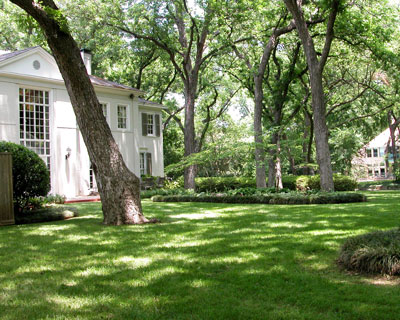Question of the Week #1: September 8, 2016

Photo: Fertilizer selection can befuddle gardeners about as quickly as anything. But if you pay attention to details, it needn’t be confusing.
“Neil, do I need a ‘winterizer’ fertilizer?”
When you go into sales, half your success depends on your ability to market – to make products relevant. Gardeners know that fall feeding is critical, and that the time is at hand. Winter can’t be far behind. If you can market a plant food as being perfect for fall growth and as a means of helping your grass get through the winter, that would be great. So the word “Winterizer” goes onto the label in big, bold letters and everyone walks away happy.
But the curious thing is that soil test results change very slowly, especially for clay soils. Historically over the past several decades, Texas A&M has been warning us that our soils contain excessive amounts of phosphorus, middle number of the fertilizer analysis.
Those same tests show that our soils are almost always deficient in nitrogen. After all, it’s highly soluble and is used abundantly by plants during their periods of active growth.
And finally, the tests come back showing we have good amounts of potassium. That’s not surprising, since many Texas soils originate from rock that’s high in potassium.
So the soil test reports have usually come back (by the thousands) suggesting that we use high-quality, all-nitrogen fertilizers that have half or more of that nitrogen in slow-release form to lessen the chance of nitrogen leaching into the water supply.
And here’s where we hop onto the fast train. Those results are the same month after month. That means that the TAMU recommendations for fertilizer analyses aren’t going to change much, probably not at all, from April to October.
Short Form: The same fertilizer you bought for your spring garden, lawn and landscape will work just as well to winterize your plantings in fall.
Look for a fertilizer bag that says it has only has nitrogen (or perhaps a small percentage of potassium, but no phosphorus), and that has half or more of that nitrogen in an encapsulated or coated form.
Note: If you have sandy soil, these comments may not be quite as accurate. You’ll still need to use more nitrogen than either of the other major elements. Let the soil test report be your guide.
Feed your lawn, garden and landscape plants now, and unless you’re growing cold-tolerant plants like ryegrass, greens and cool-season annuals that will be fed during the winter, you’ll be done for the season.
Wash and oil your spreader and hang it up in the toolshed.
